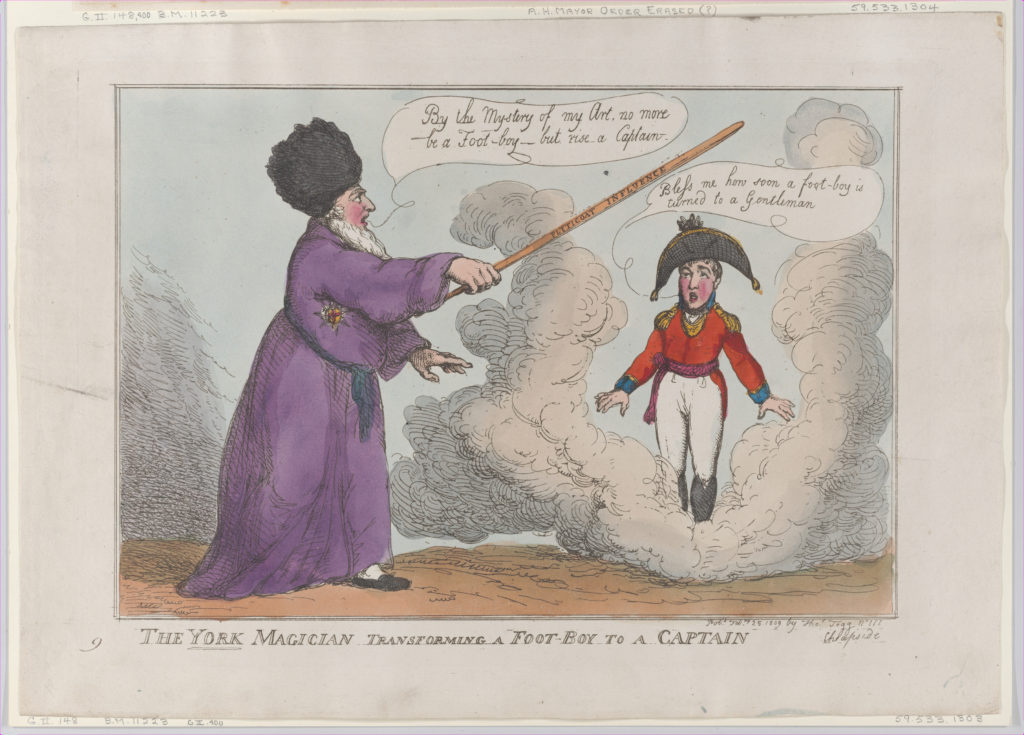Is it every day or just every week that we see an announcement of a new “transformative agreement” between a publisher and a library or library consortium? Or, if not a press release announcing such an agreement, a statement that such is the goal of a newly opened — or perhaps faltering — set of negotiations? Almost as quickly, the questions start. What’s read-and-publish? Is this contract Plan S compliant? What makes an agreement transformative anyway?
What follows is a basic primer on transformative agreements and their characteristics and components.

What is a Transformative Agreement?
At its most fundamental, a contract is a transformative agreement if it seeks to shift the contracted payment from a library or group of libraries to a publisher away from subscription-based reading and towards open access publishing. Though there are many flavors of transformative agreements, the following attempts to offer a description of their core components.
Transformative agreements are everywhere and, although they have received greater attention over the past year, particularly in North America, they are not new. All five of the largest publishers, as well as other smaller ones, have signed one or more transformative agreements. These agreements may be with an individual library (e.g., MIT/Royal Society of Chemistry), a library system (e.g., University of California/Cambridge University Press), or a library consortia (e.g., VSNU-UKB/Springer Nature).
Principles
Plan S brought the notion of transformative agreements to the forefront in contemporary discussions, but these agreements — and requirements that they be developed — well pre-date Plan S. Individual libraries, library consortia, and national organizations often develop specific requirements for the transformative agreements that they are seeking. For example, the Requirements for Transformative Open Access Agreements: Accelerating the Transition to Immediate and Worldwide Open Access provides guidance for Jisc Collections and for U.K. higher education institutions. Negotiating Journal Agreements at UC: A Call to Action does so similarly for the University of California system. ESAC: Efficiency and Standards for Article Charges (Max Planck Digital Library) provides a listing of Negotiation Principles Internationally.
Principles for transformative agreements typically include a number of components that are related to the transition from subscription-based reading to contractually-based publishing.
- Costs. Libraries seek transformative agreements to shift from paying subscriptions to paying for publishing with the goal of furthering movement toward an open access publishing ecosystem. Libraries may also pursue transformative agreements in order to attempt to exert control over rising payments for publishing, particularly under mandates for open access publishing.
- Copyright. Transformative agreements tend to require that copyright be retained by the author and not transferred to the publisher. Though this may be accomplished by the publisher procuring a license to publish, agreements increasingly couple copyright retention with a requirement that the author apply a Creative Commons license to the published article and possibly to the author manuscript version(s) as well. CC BY is very commonly recommended or required.
- Transparency. Principles for transformative agreements often insist that the terms of any such agreements be made publicly available. However, though full contracts are sometimes made public (e.g. DEAL/Wiley), even the most staunch advocates of open access transformative agreements may only provide an overview of the key components (e.g., MPDL-Max Planck Society/American Chemical Society).
- Transitional. Definitionally, transformative agreements are transitional in that they seek a pathway for a shift away from payment to read and toward payment to publish. They are predicated on an end state in which subscription-based reading payments cease to exist. This end state may not be imminent but such is the goal — a shift to open access and the concomitant paying for publishing rather than reading.
There are many aspects of transformative agreements that are not stipulated by the emerging consensus definition. For example, whether the agreement includes all of the titles in a publisher’s portfolio, whether the agreement is inclusive of hybrid and fully open access journals in that portfolio, and whether the payment for open access publishing is structured ala carte or as an all-you-can-publish buffet-like offering are among the components that are not specifically addressed. A transformative agreement for a portion of a publisher’s portfolio may be supplemented by an additional agreement addressing other titles or provision of services.
Read-and-Publish vs Publish-and-Read
Transformative agreements are increasingly described as either Read-and-Publish or Publish-and-Read.
A Read-and-Publish agreement is an agreement in which the publisher receives payment for reading and payment for publishing bundled into a single contract. This bundling together brings payment for publishing into a contractual arrangement rather than being addressed ad hoc by individual authors who are choosing open access publishing. In addition to publishing fees being brought under a contractual arrangement, a transformative agreement seeks to re-direct funds previously spent on subscription-based reading to the publishing component, often with a goal of a cost-neutral read-and-publish agreement in comparison with the previous subscription-based reading agreement. More aggressive library approaches seek a decrease in price rather than a cost-neutral approach; however, while some successfully concluded agreements to date may be cost-neutral, others in reality cost more (and may or may not include price caps or controls on total potential costs).
In contrast, a Publish-and-Read agreement is an agreement in which the publisher receives payment only for publishing and reading is included for no additional cost. Again, the library goal is typically a cost-neutral contract in comparison with the previous subscription-based reading agreement or perhaps a decrease in price; however, these goals are not always realized.
On the publisher side, it may be a distinction without a difference whether a particular contract is a read-and-publish or publish-and-read as long as the resultant total payment is acceptable and does not upend long-term financial viability, even if revenue declines. Some have questioned the advisability of these types of agreements, suggesting that they may be unsustainable in the long run. In addition, certain publishers have observed that such contracts are not currently universally desired and that some libraries/institutions are unable to fund publication fees.
For a single library, whether a contract is read-and-publish or publish-and-read may also be relatively inconsequential. Within a library consortium, however, publish-and-read may have a greater impact on the proportionate distribution of cost than read-and-publish. Under read-and-publish all libraries in a consortium remain responsible for read access whereas in a publish-and-read situation the costs may be borne only by the subgroup of libraries that are part of institutions that have scholars who publish.
Concluding Thoughts
It is worth noting that the draft of the Guidance on the Implementation of Plan S includes a substantial discussion of transformative agreements (Section 11) and adds additional considerations with respect to what cOAlition S considers transformative in 2019 vs what will be required starting in 2020. Specifically, the Guidance states that from 2020 onward, negotiations for transformative contracts need to be concluded before the end of 2021, that such contracts may not last for longer than three years, and that the agreements must include “a scenario that describes how the publication venues will be converted to full Open Access after the contract expires.” It is still unknown if this text will remain in the final version of the Guidance. If it remains, we may face the reality that the same contract might be listed as transformative by ESAC but considered not transformative by cOAlition S. This is not unlike the question of whether “bronze” open access is really open access. It depends on who you ask.
In addition to contractual transformative agreements between publishers and libraries, there are also a number of other models that seek to support open access publishing through various transformative mechanisms. Though I have not discussed these other approaches here, they are usefully described in Section 4 of Towards Transition Strategies and Business Models for Society Publishers Who Wish to Accelerate Open Access and Plan S. Some of these mechanisms might be pursued concurrently with transformative agreements while others would preclude doing so.
As for defining a “transformative agreement” per se, we know from attempts to define open access that definitions are debatable, debated, and continuously emergent. Reflected in this essay is a synthesis of the current terminology as used in recent contracts and policy documents. Given this is a fast-developing area, it is likely that the language will continue to be refined over time. I welcome comments and feedback to add clarity and nuance to our collective understanding.
Discussion
12 Thoughts on "Transformative Agreements: A Primer"
Thanks for this interesting post, Lisa. One question: What makes you think that the PAR Fee in a Publish-and-Read agreement is a ‘payment only for publishing and reading is included for no additional cost’?
Not enough data in the INTACT open APC data for Germany alone for 2017 but if you look it up for Wiley hybrid for all countries 2017, the average amount of a hybrid APC is €1,607 (https://treemaps.intact-project.org/apcdata/openapc/#publisher/Wiley-Blackwell/period=2017&country=&is_hybrid=FALSE). What do you think makes the difference to the €2,750 PAR fee in Wiley/DEAL in Germany if not the reading?
Categorization is not based on price but on the components of the contract. Look at contracts and determine (1) is there a fee for reading and (2) is there a fee for publishing? If only the former, it’s a traditional subscription contract. If only the later, a PAR. If both, a RAP.
Marthar, your link leads to Gold OA-APCs. Replace the “FALSE” by “TRUE” and the figures are pretty different
This is a useful piece of analysis. But is the emperor properly clothed? Do libraries really want what they are being offered? The institutional logic of these agreements seems to militate against selection and editorial investment. On the university side the deal will look like a ‘better deal’ to California (or Norway) if more papers get published through the publisher platform and it is unclear why the publishers would want to hold back. On the publisher side, it would appear that with payment fixed on an annual basis there is every reason to minimise cost or editorial investment and look for processing short-cuts and minimise curation effort. It does not ‘feel’ sustainable, or am I missing something?
While I don’t agree with the overall point being made by Adam -for many reasons that others will surely be keen to point out-, this is an interesting point (also raised in the interview with Mandy Hill and Chris Bennett, but from the publisher perspective): what will make these agreements a success for libraries, in the longer run?
While I can see that increasing their own researcher’s OA output is one, it would be interesting to know if there is indeed an increase in researchers from institute X submitting to journal Y that was in an RAP or PAR-deal.
Moreover, though, I would assume the success for the library to lie in the ‘transformative’ aspect of an agreement – but do we know if this is, in fact, being monitored? Are these too early days to tell? Are we hoping for Coalition S to come up with a solution (or in any case provide the resources and strategy to set up such monitoring)? When will an agreement be considered ‘transformative’ enough?
Those institutions and consortia around the world who have negotiated transformative agreements form the ESAC community (https://esac-initiative.org/about/transformative-agreements/) which convenes to assess their individual and collective progress.
Also, Also, the FAQ on the DEAL-Wiley agreement addresses some of the questions raised in the comments so far, see https://www.projekt-deal.de/faq-wiley-contract/. Please forgive the length, but I think it worthwhile quoting a few excerpts below.
What is the „Publish&Read“ model?
The Publish&Read (PAR) model proposed by DEAL is a transformative framework that places open access publishing at the forefront and institutes the financial and operational preconditions for the large-scale transition of scholarly publishing to open access.
The PAR framework constitutes a transitional cost model that enables 100% of the research outputs of German institutions and accepted for publication in Wiley journals to be published immediately open access without infringing upon the publishing preferences and workflows of authors and without having to invest further resources.
Based on the principle that “there is enough money in the system”, the funds previously paid for subscription access to journals are, instead, used to remunerate publishers with a fair and transparent price (PAR fee) for services rendered in open access publishing of scholarly articles by eligible authors and, to a much lesser degree, compensate them for the reading access still required during the transition phase.
What are the fees and how are they calculated?
The key financial component is the “Publish&Read Fee”. Multiplied with the factual annual publication volume it will constitute the core invoice amount as per the contract. The PAR fee, relevant only to open access publishing in hybrid journals (“Wiley OnlineOpen”), is set at Euro 2750 and will remain unchanged over the course of the 3-year agreement. The PAR fee itself is a key transitional element in that it builds a bridge for the previous total subscription expenditure of German institutions to be shifted to support the country’s research output under a realistic publication scenario while at the same time minimizing the risk of massive financial disruption for both parties. The PAR fee of this contract is unique to the German setting and constitutes a context-specific balance between a given historic situation and an anticipated future objective. Others may find inspiration in this principle but should not be preoccupied with the figure as such, as the starting point will be different in other contexts.
I served on a working group that produced the still-relevant Author Rights Model License Language in 2010. It considered the pragmatics of contract negotiation, language, and terms. The working group was led by Ivy Anderson with ARL, Kenneth Crews, Ellen Duranceau, James Ottaviani, Michelle Pearse, Tom Sanville, Kevin Smith. https://authorrights.wordpress.com/
The curmudgeon’s crystal ball forsees the demise of small and society publishers who’s journal programs will be subsumed by large publishers who can offer these kinds of deals! At first these little fish will enjoy editorial independence but as time goes on they will need more and more articles and their ability to attract them will decrease and they will simply sell off their properties to the large house. Consolidation will increase and we will find the few publishers who are left raising author charges as they see fit and who will be there to stop them? Things like Gates and Welcome Trust will have lost interest and go off some new crusade. College administrators will look at budgets and say why are we in the publishing business and why are we paying faculty to publish? Tenure committees will say Professor Jones only publishes with X with whom we have contract and is his/her stuff really worthwhile?
Or as Bob Dylan prophesized:
Come writers and critics
Who prophesize with your pen
And keep your eyes wide
The chance won’t come again
And don’t speak too soon
For the wheel’s still in spin
And there’s no tellin’ who
That it’s namin’.
For the loser now
Will be later to win
For the times they are a-changin’.
Bob Dylan also said: You used to laugh at Napoleon in rags and the language that he used–and also: You’re gonna have to serve somebody. Be careful with selective quotation, Harvey. Nobel laureates play both sides of the street.
Thanks for this amazing article, Lisa! This article was very badly needed for those struggling with the definitions pf RAP and PAR agreements. I just wanted one clarification: This article (https://on.ft.com/2W2jDsZ ) on FT states that “At €9m, Unit will pay Elsevier about 3 per cent more for access to journals including The Lancet and Cell.” While the link you’ve shared later on Twitter (http://bit.ly/2W32gIJ ) says, “About 400 journals owned by academic associations, as well as the third-party titles Cell Press and Lancet, are not part of the agreement.” and that “There is no increase in costs, and no standard publishing fee” [Google translated]. Does this imply that the addition of Cell Press and Lancet is largely responsible for the 3% jump in costs overall?
I don’t know. The FT article confuses me because I understand the contract is a read and publish yet it claims there is no payment for subscriptions,
which I understand there is . I think it may be that they needed to read this SK piece! 🙂
Yeah. I too wish they read your article and clarify. 🙂


